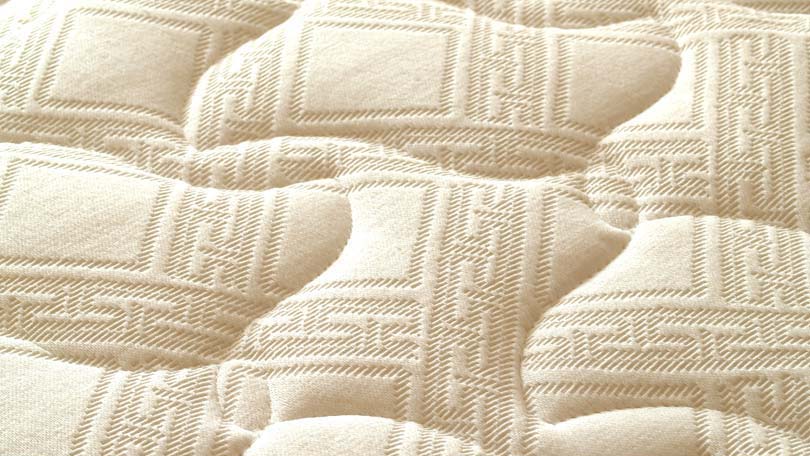
We all need to get a good night’s sleep – and preferably every night of our lives. But if you haven’t got a decent mattress, chances are this isn’t going to happen (a good night’s sleep that is).
A bed that is either too hard or too soft will tend to make you toss and turn, and chances are you’ll wake up with an aching back or muscles. At best you’ll be a tiny bit stiff but will then loosen up after a nice hot shower. At worst you’ll be tired, bad tempered and sore, probably reaching for expensive pain killers that aren’t at all good for you.
But unless you know what to look for when buying a mattress, you could easily fall prey to a bad night’s sleep!
When to Buy a New Mattress and How Much to Spend
If you don’t already own a bed, you’re going to be in the market for a new mattress as soon as you move into your own home. But the average bed is only made to last about 10 years. So if yours is older than this, you’re back in the market for a new mattress.
Even if you have a very limited budget, don’t be tempted to buy secondhand. The older a bed is, and the more it has been used (or slept in), the less support it will provide, and you’ll soon pick this up in your bones and muscles. It simply isn’t worth the chance. Even if you are buying a mattress for a child – or perhaps especially if you are buying a mattress for a child – it is imperative to buy a bed and mattress that will support his or her spine as it grows. You would probably be shocked if you knew how much damage a worn or badly made mattress could cause.
Apart from the expected lifespan of the bed’s mattress, there are also hygiene issues, especially if you don’t know who the previous owner was. You don’t even have to go past the thought of overly sweating people to imagine this very real factor.
When it comes to expenditure, a good rule of thumb is to buy the best quality bed and mattress you can afford. If it means cutting down on fancy frills and pretty bed linen, so be it. It is the basic structure of the bed and mattress that are important. Looks come second. Yes they are important, but they don’t make the top of any healthy list of mattress needs.
Where and What to Buy
It’s probably safe to say that most beds comprise a mattress plus a bed (sometimes called a sleep set), although there are beds – including traditional bedsteads and four posters – that don’t have a solid base, or even a base that is specifically made to match. Some companies make relatively inexpensive bed bases from wood, sometimes in the form of a box, and sometimes with legs, but almost always with wooden slats. The mattress then sits on top of the slats.
If you are buying a sleep set, it makes sense to buy the base and mattress together, since they were designed to be used together. If you only replace the mattress, you won’t achieve either maximum support or optimum comfort.
But how to buy?
While just about everything is available through the Internet today, there is something to be said for the advice that you should “lie before you buy”. Comfort is paramount, and even the best made, top quality bed might not appeal to you when you lie on it. One great place to start is amattress store, where you can test several types of beds.
Having said this, if you familiarize yourself with the best types of mattresses available (for example quality visco elastic or memory foam), there is no reason why you shouldn’t buy online. Irrespective, be sure to buy quality.
Some of the best brands to look out for in North America include:
- Bassett –www.bassettfurniture.com
- Sealy –www.sealy.com
- Serta –www.serta.com
- Simmons –www.simmons.com
- Spring Air –www.springair.com
By the way, even though this is an American list, many of these brands are available in many other parts of the world including Europe, Australasia and Africa.
Size and Support
Even though smaller isn’t always necessarily cheaper, it should go without saying that when you buy a bed, you must be sure that it is big enough. The strange thing is that it isn’t quite as simple as a single bed for one person and a double bed for two. It might be, but it often isn’t!
A single bed is invariably big enough for a child and usually (but not always) for a teenager. But larger individuals will benefit from what is generally termed a three-quarter bed. This is smaller than a double bed but larger than a single bed.
Similarly, double beds don’t necessarily suit two people. In part this has to do with the size of the pair who will share the bed, but it also depends on lifestyle. For instance, if a couple has young children, they probably won’t all squash into a double bed – well not easily. That might not matter if it’s simply for a cuddle with the kids. But for those parents who are happy to allow their children to sleep with them, a regular double bed simply won’t be big enough, in which case you will need to consider queen or bigger king sized mattresses.
And then there’s the question of length. If you, or your partner, are particularly tall, you need to be sure that the mattress is long enough. There is, after all, nothing quite as bad as feet sticking out the other end!
When it comes to support, this doesn’t necessarily relate to firmness. In fact the best beds today allow our bodies to sink into and literally mold into the mattress. This doesn’t mean they should be soft, and they certainly shouldn’t be too hard. Generally, they should feel “soft” and definitely not “hard”, although the heavier you (or partners) are the more support you will need.
Nowadays, high-tech, top quality “memory” mattresses are guaranteed to take on your shape and contours while you sleep. So you literally fall into a molded cushion that supports you. A top quality memory mattress won’t even need to be turned. It will just keep meeting your support and comfort needs.
Hopefully this should assist you to focus and realize what to look for when buying a mattress that will be comfortable and long lasting.







































